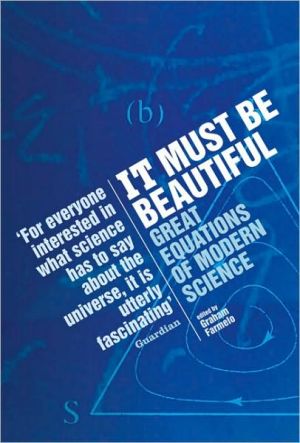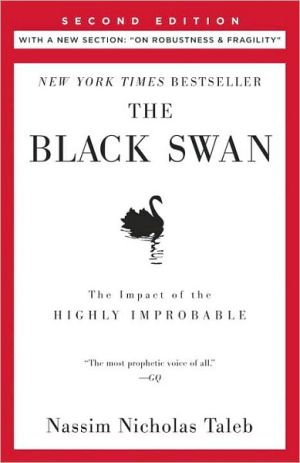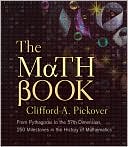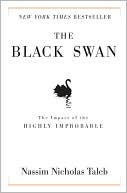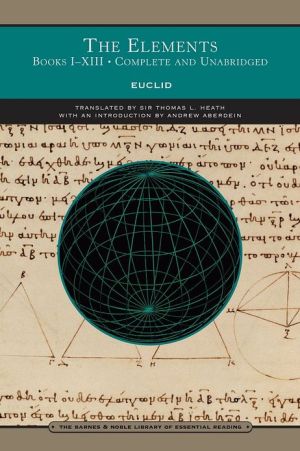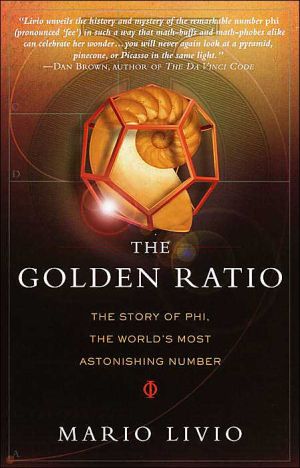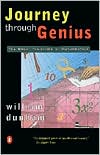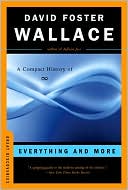It Must Be Beautiful: Great Equations of Modern Science
It Must Be Beautiful is a collection of 12 essays on the power and beauty of modern scientific equations by some of the world's foremost scientists and historians. Contributors include Steven Weinberg, Peter Galison, John Maynard Smith, and Frank Wilczek.
Search in google:
The equation has come to embody the mystery and terror of modern science. It Must Be Beautiful is a wide-ranging collection of writings that lift the lid on some of the most influential — and notorious — equations of all time. This book brings together gifted scientists and writers, including Nobel Prize winners, to interpret the scientific work of the 20th century and place it in historical perspective. Each essay presents the essence of an equation, explains why it is fundamental, defines its scope and limitations, and finally states its importance in the wider intellectual and popular culture.Contributors include Peter Galison, of Harvard University, on E=mc2; Roger Penrose on Einstein s equation of general relativity; Robert May, President of the Royal Society, on the quadratic map; John Maynard Smith on the mathematics of evolution; award-winning journalist Aisling Irwin on the equations which predicted that a hole would appear in the ozone layer; Frank Wilczek on the Dirac equation for the electron; Oliver Morton, contributing editor to Wired magazine, on the Drake equation, which clarifies thinking about the likelihood of extra-terrestrial life; and a thoughtful afterword by Nobel Laureate Steven Weinberg. Library Journal The power of equations can seem magical, writes MIT physics professor Frank Wilczek in an essay on the Dirac Equation, which describes the movement of quantum particles. Like the brooms created by the Sorcerer's Apprentice, they can take on a life of their own, giving birth to consequences that their creator did not expect, cannot control, and may even find repugnant. Though it seems like an odd reversal of the scientific method to do the math first and then find the data that fit, it has happened time and again. These 11 essays contributed by various scientists and science writers (e.g., Roger Penrose, Peter Galison, Oliver Morton, and Steven Weinberg) describe scientific advances that derived from mathematical theory such as Einstein's thought experiments on relativity, a game theory equation that predicted animal behavior, or the discovery that the mathematics of chaos describes the real-world phenomenon. A fascinating history of science for educated nonmathematical readers; for larger public and academic libraries. Amy Brunvand, Univ. of Utah Lib., Salt Lake City Copyright 2002 Cahners Business Information.
Equations are the foundation on which modern science rests. Yet, argues Graham Farmelo, they can be as exquisite as the finest poetry. Shakespeare could no more have foreseen the multiple meanings that readers have perceived in 'Shall I compare thee to a summer's day' than Einstein could have predicted the myriad consequences of his equations of relativity.\ \ Science is for those who learn; poetry, for those who know.—Joseph Roux in Meditations of a Parish Priest, part 1, number 71 (1886)\ During a radio interview Philip Larkin gave in May 1974 to promote his High Windows collection, he pointed out that a good poem is like an onion. On the outside, both are pleasingly smooth and intriguing, and they become more and more so, as their successive layers of meaning are revealed. His aim was to write the perfect onion. The poetry of science is in some sense embodied in its great equations and, as the essays in this book demonstrate, these equations can also be peeled. But their layers represent their attributes and consequences, not their meanings. Despite the best efforts of poets and literary critics, no one has ever come up with an uncontroversial definition of a poem. No such problems beset mathematicians asked to define the term 'equation'. An equation is fundamentally an expression of perfect balance. For the pure mathematician—usually unconcerned with science—an equation is an abstract statement, having nothing to do with the concrete realities of the real world. So when mathematicians see an equation like y = x + 1, they think of y and x as completely abstract symbols, not as representing things that actuallyexist.\ It is perfectly possible to imagine a universe in which mathematical equations have nothing to do with the workings of nature. Yet the marvellous thing is that they do. Scientists routinely cast their laws in the form of equations featuring symbols that each represent a quantity experimenters can measure. It is through this symbolic representation that the mathematical equation has become one of the most powerful weapons in the scientists' armory.\ Best known of all scientific equations is E= mc2, first suggested by Einstein in 1905. Like most great equations, it asserts an equality between things that superficially appear to be quite different—energy, mass and the speed of light in a vacuum. Through this equation Einstein predicted that, for any mass you like (m), if you multiply it twice by the speed of light in a vacuum (denoted by the letter c) the result is exactly equal to its corresponding energy (E). Like every other equation, E= mc2 balances two quantities, in the same way as a pair of weighing scales, with the = sign serving as the pivot. But whereas the scales balance weights, most equations balance other9uantities; E= mc2, for example, balances energies. This celebrated equation began its life as a confident Einsteinian speculation, and only decades later became part of the corpus of scientific knowledge, after experimenters had shown that it does indeed concur with nature. Now a twentieth-century icon, E= mc2 is one of the few things about science that every TV quiz participant is expected to know.\ In common with all great scientific equations, E= mc2 is in many ways similar to a great poem. Just as a perfect sonnet is spoiled if so much as a word or an item of punctuation is changed, not a single detail of a great equation such as E= mc2 can be altered without rendering it useless. E = 3mc2, for example, has nothing whatever to do with nature.\ Great equations also share with tbe finest poetry an extraordinary power—poetry is the most concise and highly charged forn of language, just as the great equations of science are the most succinct fonn of understanding of the aspect of physical reality they describe. E = mc2 is itself enormously powerful: its few symbols encapsulate knowledge that can be applied to every energy conversion, from ones in every cell of every living thing on Earth, to the most distant cosmic explosion. Better yet, it seems to have held good since the beginning of time.\ In the same way as close study of a great equation gradually enables scientists to see things that they initially missed, so repeated readings of a great poem invariably stir new emotions and associations. The great equations are just as rich a stimulus as poetry to the prepared imagination. Shakespeare could no more have foreseen the multiple meanings readers have perceived in 'Shall I compare thee to a summer's day?' (sonnet 18) than Einstein could have predicted the myriad consequences of his equations of relativity.\ None of this is to imply that poetry and scientific equations are the same. Every poem is written in a particular language and loses its magic in translation, whereas an equation is expressed in the universal language of mathematics: E= mc2 is the same in English as it is in Urdu. Also, poets seek multiple meanings and interactions between words and thoughts whereas scientists intend their equations to convey a single logical meaning.\ The meaning a great scientific equation usually furnishes us with is called a law of nature. An analogy popularized by the physicist Richard Feynman helps to clarify this relationship between equations and laws. Imagine people watching a game being played on a chessboard. If they had never been taught the rules of chess, they could soon work them out simply by observing how the players move various pieces. Now imagine that the players are not playing chess on an ordinary chequered board, but are moving the pieces according to a very much more complicated set of rules on a hugely extended board. For the observers to be able to work out the rules of the game, they would have to watch parts of it extremely carefully, looking for patterns and any other clues they could muster. That, in essence, is the predicament of scientists. They closely observe nature—the movements of the pieces on the board—and try to glean the underlying laws.\ Armies of thinkers have been defeated by the enigma of why most fundamental laws of nature can be written down so conveniently as equations. Why is it that so many laws can be expressed as an absolute imperative, that two apparently unrelated quantities (the equation's left and right sides) are exactly equal? Nor is it clear why fundamental laws exist at all. A popular, tongue-in-cheek explanation is that God is a mathematician, an idea that unhelpfully replaces profound questions with a doubly unverifiable proposition. Yet divine design has long been a popular explanation of the efficacy of equations in science. Witness the quotation on the memorial bust of America's first professional woman astronomer Maria Mitchell (1818-89) in the Bronx Hall of Fame: 'Every formula which expresses a law of nature is a hymn of praise to God', words written by Mitchell in 1866.\ Even more contentious than the provenance of scientific equations is the question of whether they are invented or discovered. The Indian-American astrophysicist Subrahmanyan Chandrasekhar probably spoke for most great theoreticians when he remarked that when he found some new fact or insight, it appeared to him to be something 'that had always been there and that I had chanced to pick up'. According to this view, the equations that underlie the workings of the universe are in some sense 'out there', independent of human existence, so that scientists are cosmic archaeologists, trying to unearth laws that have lain hidden since time began. The origin of the laws remains a complete mystery.\ Of the hundreds of thousands of research scientists who have ever lived, very few have an important scientific equation to their name. Two scientists who were adept at discovering fundamental equations and especially perceptive about the role of mathematics in science were Albert Einstein and the almost comparably brilliant English theoretical physicist Paul Dirac. Neither was a mathematician per se, but both were remarkable in their ability to write down new equations that were as fecund as the greatest poetry. And both men were captivated by the belief that the fundamental equations of physics must be beautiful.\ This may sound strange. The subjective concept of beauty is unwelcome in polite intellectual circles, and certainly has no place in academic critiques of high art yet it's a word that readily comes to the lips of all of us—even to the most pedantic critics—when we are moved by the sight of a smiling baby, a mountain vista, an exquisitely formed orchid. What does it mean to say that an equation is beautiful? Fundamentally, it means that the equation can evoke the same rapture as other things that many of us describe as beautiful. Much like a great work of art, a beautiful equation has among its attributes much more than mere attractiveness—it will have universality, simplicity, inevitability and an elemental power. Think of masterpieces like Cezanne's Apples and Pears, Buckminster Fuller's geodesic dome, Judi Dench's interpretation of Lady Macbeth, Ella Fiagerald's recording of 'Manhattan'. During my first experience of each of them, I soon realized that I was in the presence of something monumental in conception, fundamentally pure, free of excrescence and crafted so carefully that its power would be diminished if anything in it were changed.\ An additional quality of a good scientific equation is that it has utilitarian beauty. It must tally with the results of every relevant experiment and, even better, make predictions that no one has made before. This aspect of an equation's effectiveness is akin to the beauty of a finely engineered machine of the kind we hear about in Stanley Kubrick's film Full Metal Jacket, when marine recruit Gomer Pyle starts talking to his rifle. The besotted Pyle praises its meticulous construction, delighting in the qualities that make it supremely fit for its lethal purpose. It would not be nearly so beautiful if it didn't work.\ The concept of beauty was especially important to Einstein, the twentieth century's quintessential scientific aesthete. According to his elder son Hans, 'He had a character more like that of an artist than of a scientist as we usually think of them. For instance, the highest praise for a good theory or a good piece of work was not that it was correct nor that it was exact but that it was beautiful.' He once went so far as to say that 'the only physical theories that we are willing to accept are the beautiful ones', taking it for granted that a good theory must in the end agree with experiment. Dirac was even more emphatic than Einstein in his belief in mathematical beauty as a criterion for the quality of fundamental theories and even averred that this was for him 'a kind of religion'. In the latter part of his career, he spent a good deal of time touring the world, giving packed-out lectures on the origins of the great equation that bears his name, continually stressing that the pursuit of beauty had always been a lodestar as well as an inspiration. During a seminar in Moscow in 1955, when asked to summarize his philosophy of physics, he wrote on the blackboard in capital letters, 'Physical laws should have mathematical beauty.'\ For lesser mortals, such aestheticism is a tough and unproductive credo. The prosaic fact is that for most scientists, beauty is neither a concept that much concerns them nor is it a helpful guide in their day-to-day work. True, the equations they use have an underlying beauty and the correct solutions to these equations are much more likely to be beautiful than ugly. But beauty can be misleading. Science is littered with the remains of theories that were once perceived as beautiful but turned out to be wrong—not what nature had in mind. For most scientists exploring a new theory, the number one criterion of its validity is whether it agrees with experiment. The idea that science advances through a combination of experiment and mathematically based theory is relatively new. It originated in Florence only 350 years ago, yesterday in comparison with the span of human history. The originator was Galileo, the first modern scientist, who saw that science proceeds best by considering a narrow range of phenomena, and that the result will be laws that can be described in precise mathematical terms. This was among the greatest and most productive discoveries in the entire history of ideas.\ Since Galileo's time, science has become steadily more mathematical. Equations are now a hugely important scientific tool and it is virtually an article of faith—certainly for most theoreticians—certainly for most physicists—that there exists a fundamental equation to describe the phenomenon they are studying or that someone some day will find a suitable equation. Yet, as Feynman was fond of speculating, it may eventually turn out that fundamental laws of nature do not need to be stated mathematically and that they are better expressed in other ways, like the rules governing a game of chess.\ For now, it seems that equations offer the most effective way of expressing most fundamental scientific laws. But equations are not the preoccupation of all scientists, many of whom do well with only a rudimentary acquaintance with mathematics. This point is made in the joke about a mathematician, a physicist, an engineer and a biologist when someone asks each of them the numerical value of . The mathematician responds crisply that it's 'equal to the circumference of a circle divided by its diameter'. The physicist counters that it's '3.141593, give or take 0.000001'. The engineer says that it's 'about 3'. The biologist asks, 'What's ?'\ This is of course a caricature. Some physicists have little mathematics, some engineers are brilliant in their ability to apply mathematics to their work, and some theoretical biologists are hotshot mathematicians. However, like all caricatures, it has a kernel of truth. Engineers tend to have a utilitarian attitude to mathematics, and place a high premium on making good approximations. And of all the sciences, physics is the most mathematical, biology the least. Since Galileo's time, physicists have flourished mainly by keeping things simple, by breaking down the complexities of the everyday world into their simplest component parts. Such reductionism is not always an option for biologists, whose bailiwick is the hugely complicated living world, with its interrelated communities of organisms, every one of which has a hugely complex structure in molecular terms. And let us not forget that the unifying theory of biology is superficially at least non-mathematical—The Origin of Species, Darwin's account of his theory of evolution by natural selection, doesn't contain a single equation. The same is true for the geologists' theory of continental drift, whose early papers (published soon after World War I) were virtually an equation-free zone.\ The essays in this collection reflect the importance of mathematics in the various overlapping areas of science from 1900 onwards. Physics is appropriately well represented. Three of Einstein's great contributions (including E= mc2 and his equation of general relativity) are discussed and there are contributions on other important equations that have led to our current understanding of the subatomic world. The Dirac equation has a special place: not only did the equation do its intended job of describing the behaviour of the electron, it also unexpectedly predicted the very existence of antimatter, which at one time constituted half of the entire universe. No wonder Dirac commented, 'My equation is smarter than I am.'\ The equations of subatomic physics form the basis of the Standard Model, the deeply prosaic name for the current theory of fundamental particles and their interactions (leaving aside the most familiar force of all, gravity, which is ironically beyond the model's scope). This book's afterword draws together the strands that have contributed to the Model, one of the intellectual triumphs of the twentieth century.\ Two essays look at some of the equations of modern biology. The first explains how evolutionary ideas can be expressed mathematically to give richly diverse insights into the living world, from the mating behaviour of red deer to the ratios of males to females in communities of wasps. The second essay concerns the so-called quadratic map, a deceptively simple equation in theoretical ecology that can be used to understand the varying population of fish in a garden pond and the fluctuating numbers of grouse on a moor, as well as a host of similar problems. This equation played a crucial role in the history of chaos, for it turned out that the equation strikingly embodies chaotic behaviour—behaviour that is extremely sensitive to initial conditions. It was in large part thanks to this equation, one so simple that children can study it at school, that scientists in the 1970s came to see that some equations that appear to predict the future in terms of the past are completely unable to makes such predictions, contrary to what most scientists had thought.\ Two other equations covered here concern information science and the search for extraterrestrial intelligence. The essay on information science addresses the equations of the late doyen of information theorists, Claude Shannon, who pioneered the mathematical apparatus that underlies what we now call the communications revolution. Shannon's equations apply to every type of information transfer, including the Internet, radio and television.\ The search for extraterrestrial intelligence (SETI) may not be a topic for which you would expect there to be an equation. How can there be an equation for something that may not exist? The answer is that SETI's key equation—first written down by the American astronomer Frank Drake—does not make predictions; rather, it disciplines our thinking about the probability that there exist civilizations that can communicate with us. Not an equation that is beautiful in the sense understood by Einstein and Dirac, Drake's formula has nonetheless brought some coherence to a field potentially rife with woolliness.\ Mathematical equations are not the only type of equation used by scientists. Chemists, for example, use equations that are not written solely in terms of mathematical symbols but in terms of letters representing atoms, molecules and their submicroscopic relatives. A huge amount of industrial activity is based on chemical equations like this, each one describing an interaction whose details can be inferred but almost never observed with the naked eye. We have chosen one special set of chemical reactions for inclusion here, to represent the power of chemical thinking. These wonderfully simple equations formed the basis of scientific understanding of the thinning of the ozone layer and its cause, the presence of chemicals known as CFCs in the Earth's atmosphere. In the early 1980s, these simple equations helped to awaken humanity's sense of impending environmental apocalypse.\ The authors of this book are leading scientists, historians and writers. They have looked at whichever aspects of their equation—Larkin's layers— strike them as being most intriguing, for the most part eschewing the eyewatering mathematical details. The result is a set of uniquely personal meditations on some of the seminal equations of modern science, equations that through their concision, power and fundamental simplicity can be regarded as some of the most beautiful poetry of the twentieth century.\ Among my own collection of poetry, on the shelf above my desk, sits a dustless copy of High Windows. I first read it when I was a greenhorn student of subatomic physics, struggling to understand its fundamental equations and to appreciate their beauty. The collection was given to me by a Larkin-loving friend, a student of English literature, just a few days after the collection was published. Her message to me was the same as mine is now to you: Enjoy the onions.\ \
\ From Barnes & NobleAesthetics plays a larger role in science than many know. Indeed nonscientists might be taken aback at the notion that something so seemingly dry as a mathematical equation might be called beautiful. Here scientists and historians of science pay homage to a dozen of the loveliest bits of math, including the beloved E=mc2.\ \ \ \ \ Library JournalThe power of equations can seem magical, writes MIT physics professor Frank Wilczek in an essay on the Dirac Equation, which describes the movement of quantum particles. Like the brooms created by the Sorcerer's Apprentice, they can take on a life of their own, giving birth to consequences that their creator did not expect, cannot control, and may even find repugnant. Though it seems like an odd reversal of the scientific method to do the math first and then find the data that fit, it has happened time and again. These 11 essays contributed by various scientists and science writers (e.g., Roger Penrose, Peter Galison, Oliver Morton, and Steven Weinberg) describe scientific advances that derived from mathematical theory such as Einstein's thought experiments on relativity, a game theory equation that predicted animal behavior, or the discovery that the mathematics of chaos describes the real-world phenomenon. A fascinating history of science for educated nonmathematical readers; for larger public and academic libraries. Amy Brunvand, Univ. of Utah Lib., Salt Lake City Copyright 2002 Cahners Business Information.\ \
